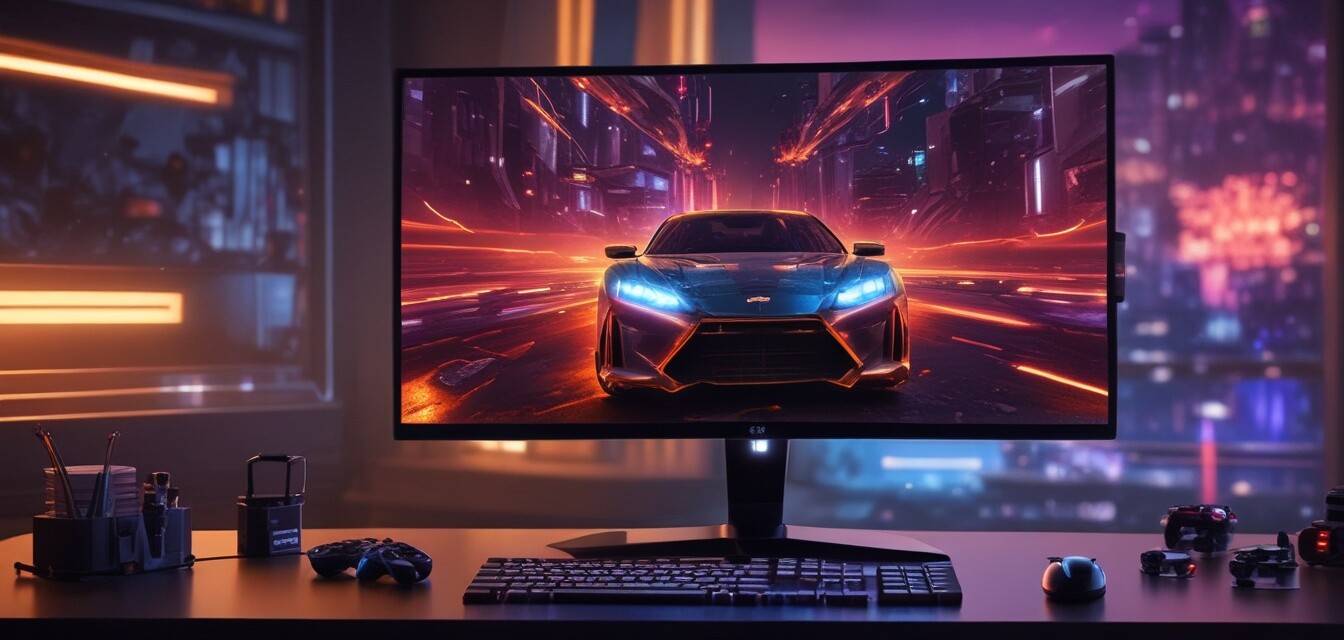
Understanding HDR in OLED Gaming Monitors
Key Takeaways
- HDR significantly enhances visual quality in gaming, providing deeper contrast and richer colors.
- Choosing an OLED gaming monitor with good HDR support can elevate your gaming experience.
- Look for features like peak brightness, color gamut, and local dimming capabilities when selecting an HDR monitor.
- Not all HDR implementations are the same; understanding the specifications is crucial.
High Dynamic Range (HDR) technology has revolutionized the way we experience gaming visuals. For gamers using OLED monitors, HDR can deliver an unparalleled level of detail, color accuracy, and contrast. In this article, we will explore what HDR is, its benefits for gaming, and how to choose the right HDR OLED gaming monitor for your setup.
What is HDR?
HDR, or High Dynamic Range, is a technology designed to replicate a wider range of colors and luminosity than standard dynamic range (SDR) displays. It allows you to see luminance levels that are closer to what the human eye can perceive in the real world. For gaming, this means more vibrant colors, brighter highlights, and deeper shadows, greatly enhancing the overall immersive experience.
Benefits of HDR in Gaming
- Improved Visual Fidelity: HDR allows for more detailed textures, gradients, and lighting effects.
- Enhanced Color Depth: HDR monitors can display a broader color gamut, making games look visually stunning.
- Better Contrast: The ability to display bright highlights next to deep shadows creates a more dynamic and lifelike image.
- Increased Immersion: With richer visuals, players can find themselves more involved in the gameplay.
Key Features to Look for in HDR OLED Gaming Monitors
When selecting an HDR OLED gaming monitor, there are key specifications to consider:
| Feature | Description |
|---|---|
| Peak Brightness | Look for monitors that offer at least 600 nits or higher for a superior HDR experience. |
| Color Gamut | A monitor that covers 90% or more of the DCI-P3 color space is ideal for HDR content. |
| Local Dimming | Allows for better contrast by controlling the brightness in designated areas of the screen. |
| HDR Standard | Select monitors that support HDR10, HDR10+, or Dolby Vision for the best compatibility with content. |
Common HDR Formats
Understanding the different HDR formats is essential when choosing a monitor:
- HDR10: The most widely used format, compatible with most consoles and PCs.
- HDR10+: An improvement over HDR10, offering dynamic metadata for enhanced performance.
- Dolby Vision: A premium format that adjusts brightness and color on a scene-by-scene basis.
Comparing HDR and SDR
| Feature | HDR | SDR |
|---|---|---|
| Contrast Ratio | High | Standard |
| Color Depth | 10-bit (or higher) | 8-bit |
| Peak Brightness | 600 nits or more | Typical 300-400 nits |
| Supported Formats | Multiple formats including HDR10 and Dolby Vision | Limited to standard formats |
Choosing the Right HDR OLED Gaming Monitor
To optimize your gaming experience with HDR, here are some tips to consider:
Tips for Beginners
- Start by setting a budget; OLED monitors can range widely in price.
- Consider the types of games you play—some may benefit more from HDR than others.
- Check reviews and comparisons to ensure you are getting a monitor with genuine HDR performance.
- Visit product comparisons to see real-world performance metrics.
- Be aware of potential compatibility issues with older gaming consoles.
Conclusion
Understanding HDR technology is crucial for any gamer looking to enhance their experience with an OLED gaming monitor. The right features and specifications can make a significant difference in how you perceive your games. With this guide, you can confidently choose an HDR OLED monitor that fits your gaming style and needs.
For more tips on buying an OLED gaming monitor, check out our Buying Guides. Stay informed about the latest trends in OLED technology by visiting the News and Trends section of our site.
Pros
- Incredible color accuracy and contrast levels
- Immersive gaming experience
- Future-proof technology with support for various HDR formats
Cons
- Higher price point compared to standard monitors
- Potential burn-in issues with static content
- Requires compatible hardware to fully utilize HDR features